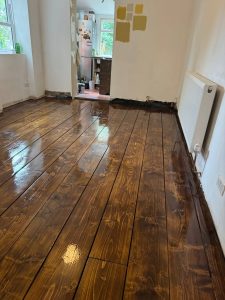
Sanded floors can significantly enhance the beauty and value of your home, especially in a bustling city like London where style and functionality go hand in hand. Understanding the lifespan of sanded floors and what to expect over time can help you maintain their appearance and durability. Here’s a comprehensive guide on the longevity of sanded floors and how to ensure they stand the test of time.
- Initial Quality and Installation
High-Quality Wood:
- The type and quality of wood play a crucial role in the longevity of sanded floors. Hardwoods like oak, maple, and walnut tend to last longer than softer woods like pine.
Professional Installation:
- Proper installation ensures the wood is laid correctly, preventing issues like warping and gaps. Hiring experienced professionals for the initial installation can extend the life of your floors.
- Frequency of Sanding

Typical Lifespan:
- Sanded floors can generally be expected to last between 7 to 10 years before needing another sanding, depending on the level of foot traffic and the care they receive.
High-Traffic Areas:
- Areas with heavy foot traffic, such as hallways and living rooms, may require more frequent sanding, approximately every 5 to 7 years.
Low-Traffic Areas:
- Bedrooms and other low-traffic areas may extend beyond 10 years before needing to be sanded again.
- Maintenance and Care
Regular Cleaning:
- Regularly sweeping or vacuuming your floors to remove dirt and debris prevents scratches and preserves the finish. Use a damp mop with a pH-neutral cleaner for deeper cleaning.
Preventative Measures:
- Place mats at entryways to reduce the amount of dirt tracked in. Use furniture pads to prevent scratches from moving furniture, and avoid high heels on wood floors to reduce dents.
Humidity Control:
- Maintaining stable indoor humidity levels (35-55%) prevents wood from expanding and contracting, which can cause gaps and cracks.
- Types of Finishes
Durable Finishes:
- The type of finish applied after sanding affects the lifespan of your floors. Oil-based polyurethanes are known for their durability, typically lasting longer than water-based finishes.
Regular Recoating:
- To extend the life of your sanded floors, consider recoating them every 3-5 years. This involves lightly sanding the top layer and applying a new coat of finish to protect the wood.
- Common Signs of Wear and Tear
Visible Scratches and Dents:
- Over time, scratches and dents will appear, especially in high-traffic areas. Minor scratches can often be buffed out, but deeper damage may require a full sanding.
Fading and Discoloration:
- Exposure to sunlight can cause your floors to fade and discolour. Using UV-resistant finishes and window treatments can help mitigate this effect.
Splinters and Rough Patches:
- If you notice splinters or rough patches, it may be time for sanding. These issues indicate that the protective finish has worn down, exposing the raw wood.
- When to Consider Replacement

Excessive Sanding:
- Wooden floors can only be sanded a limited number of times, typically 3-5 times, depending on the thickness of the wood. After multiple sandings, the floorboards may become too thin and require replacement.
Structural Damage:
- If your floors suffer from significant structural damage, such as deep cracks, severe warping, or extensive water damage, replacement might be the best option.
Conclusion
The lifespan of sanded floors largely depends on the quality of the wood, the frequency of sanding, and the level of maintenance they receive. By following proper care routines and being aware of the signs of wear and tear, you can ensure that your floors remain beautiful and functional for many years.
In London, where style and practicality are essential, well-maintained sanded floors can significantly enhance the appeal and value of your home. Regular maintenance, timely sanding, and choosing the right finishes are key to extending the life of your floors. Keep these tips in mind, and enjoy the timeless elegance of your wooden floors for years to come.

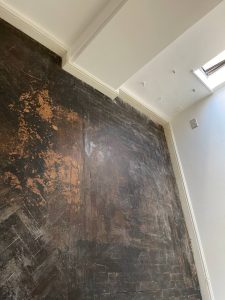
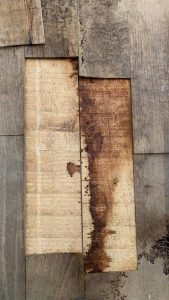

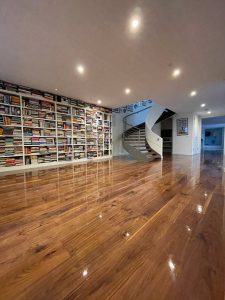



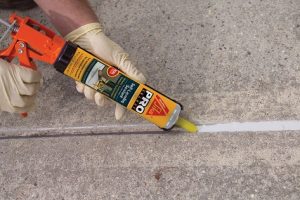
The Lifespan of Sanded Floors: What to Expect
Sanded floors can significantly enhance the beauty and value of your home, especially in a[Read more...]
Varnishing
[Read more...]
The Difference Between Water-Based and Oil-Based Finishes
The Difference Between Water-Based and Oil-Based Finishes Choosing the Best Finish for Your Wooden[Read more...]
Gallery 01 – Sand and oak stain and varnish finish
[Read more...]
Sep
The Impact of Floor Sanding on Home Insulation
The Impact of Floor Sanding on Home Insulation Floor sanding is a[Read more...]
How to Handle Mold and Mildew Before Sanding
How to Handle Mold and Mildew Before Sanding Before sanding your floors, it is[Read more...]
Top 10 Benefits of Professional Floor Sanding
If you’re a homeowner in London, you know how important it is to maintain the[Read more...]
How to Prepare for Floor Sanding with Pets in the House
How to Prepare for Floor Sanding with Pets in the House Preparing for floor[Read more...]
Fire hearth removal
[Read more...]
The Role of Moisture Content in Floor Sanding
The Role of Moisture Content in Floor Sanding Achieving the[Read more...]